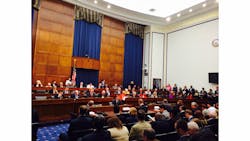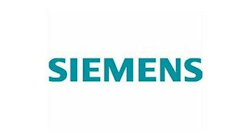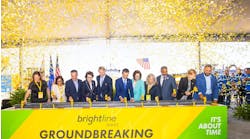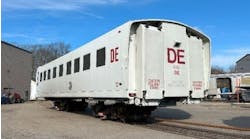High-speed rail is moving forward in America. Despite Congress not properly funding high-speed rail, several large projects are rapidly moving forward.
In California, billion dollar contracts are already being let for their statewide 220 mph HSR project. In Texas, plans for a privately funded 200 mph line between Dallas and Houston are rapidly progressing (with a link to Ft. Worth being planned by the state government). In Florida, the privately funded All Aboard Florida rail project is taking shape, with station designs being put forth by USHSR member SOM, and trains to be manufactured by USHSR member Siemens.
Several other projects are also gaining momentum by jump starting environmental studies, such as the ZipRail project in Minnesota. This new high-speed rail line envisions fast trains carrying passengers from the Twin Cities to the nationally important Mayo Clinic 90 miles to the south in Rochester, Minn.
All this activity is happening despite the lack of an official federal funding program for high speed-rail, as evidenced by a 4-year rail reauthorization bill (known as PRRIA 2014) that passed the House Transportation and Infrastructure Committee recently.
USHSR Vice President Joe Shelhorse participated in the hearing and said the bill focuses additional resources to the critical Northeast corridor and promotes rail finance in two key areas: 1. It reforms the Railroad Rehabilitation and Improvement Financing (RRIF) program to make the program easier to utilize; and 2. it encourages transit-oriented development at rail stations, which could be used to finance rail infrastructure.
USHSR welcomes the focus on the RRIF program and station area development and believes it could lead to better land use and help preserve the utility of the nation's critical NEC (Northeast Corridor rail line). It may also support the Gateway project into New York City - a critical piece of NEC high-speed rail infrastructure upgrades.
While potentially helping to release low-cost loan funds — which would require matching state dollars — to jump starting selected projects in the NEC, there's no new federal funding for rail for the short time frame of this bill. This despite the fact 88 percent of Americans support investment in HSR, and rail ridership has significantly increased year-on-year for the past decade. This despite the fact that the nation's roads and airports are overloaded and in need of relief. This despite the fact the nation's business leaders need modern, fast and efficient forms of transportation to stay competitive.
The majority of developed nations around the world already have advanced high-speed rail systems and are rapidly expanding them. They understand high-speed rail is the key to staying competitive in the modern global economy. For example, China has invested over $500 billion so far on their national high-speed rail network — now larger than the rest of the world put together. Spain has invested $140 billion so far building their national HSR network — now the largest in Europe.
More than 20 countries have high-speed rail operating today including the U.K., France, Germany, Belgium, Spain, Italy, Japan, China, Korea and Taiwan. HSR is under construction in more than 10 countries including China, Spain, Saudi Arabia, Turkey, Russia, France and Italy, and in development in another 14 countries including Qatar, Morocco, Poland, Portugal, South Africa, India, Argentina and Brazil.
America is way behind, and needs to catch up to remain competitive globally with all these nations.
"USHSR is calling for a federal investment of $20 billion per year for the next three decades," said Andy Kunz, USHSR president. "This is the kind of investment that will achieve a world-class, national rail system right here in America."
High-speed rail makes so much economic sense that projects are moving forward in America despite the lack of new federal funds in this bill. We look forward to working with Congress to properly fund a national high speed rail network across America.
The US High Speed Rail Association is putting on a conference about high speed rail in America and around the world in Los Angeles from Dec. 2-4, which will cover the new rail bill in detail, along with the rapid development of the high speed rail industry.
Daniel Krause is the director of policy and operations for the US High Speed Rail Association.




